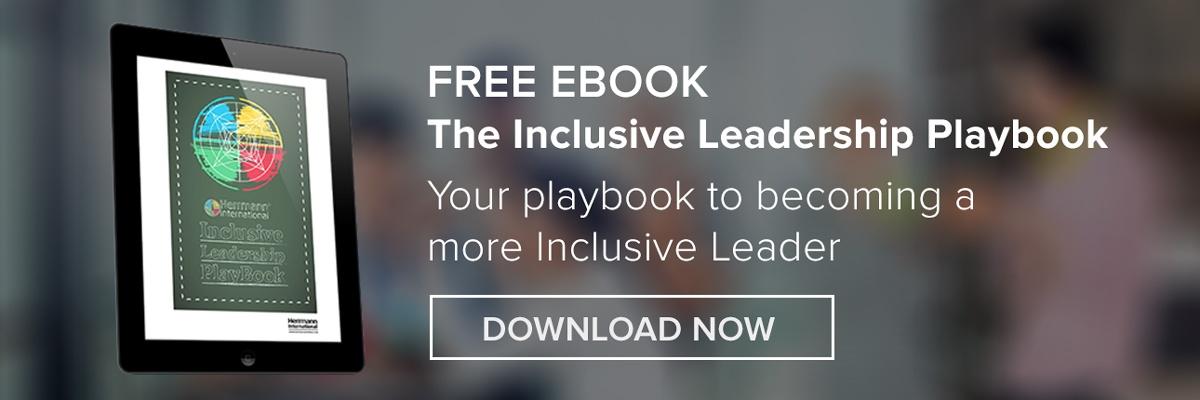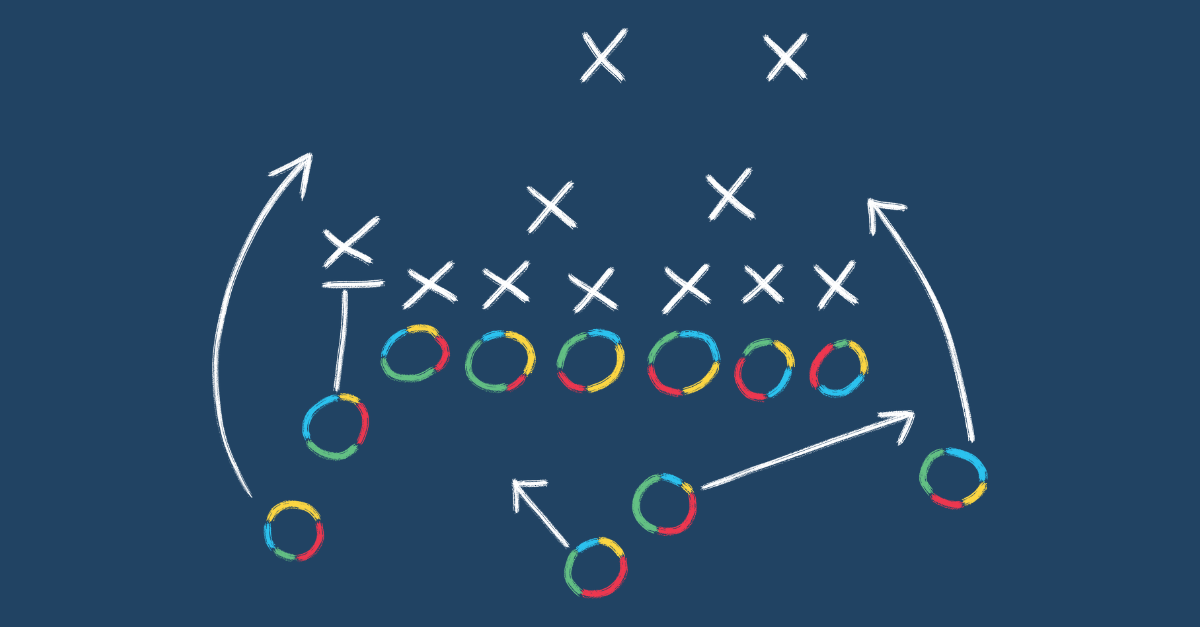“If you seek to lead, invest at least 50% of your time in leading yourself.”
This quote from Dee Hock, the founder and former CEO of Visa International, is a constant reminder to me that the ability to influence others hinges on what you see when you look at yourself—specifically, at the way you think.
There’s a lot of mystique around what makes leaders tick, but one thing is clear: truly effective leaders are ambidextrous in their thinking. In the early stages of solving problems or making decisions, they consider all of the available options. For them, it's not an “either option A or option B” world. It's “option A and option B.”
In other words, in Whole Brain® Thinking terms, most CEOs are multi-dominant in their thinking preferences. They have a natural mental agility that allows them to move through several different modes of thinking. During a single conversation, they might analyze the causes of a problem (A-quadrant thinking) and offer a creative solution (D quadrant) that enhances the customer experience (C quadrant). In addition, they might translate that solution into a project plan with a detailed list of next steps (B quadrant).
Inclusive Leaders Lead with a Whole Team of Selves
When you bring together diversity of thought in a workplace team, you get significantly greater creative output. Effective leaders access this kind of diversity within themselves. It’s as if they play the leadership game with a whole team of selves, each with a distinct thinking skill.
Here are some of the ways inclusive leaders manage their mental processes.
A–Analyze: This mental process is logical, fact-based, and often quantitative. Skilled leaders can look at an array of information and extract meaning that can be used to solve problems and achieve goals. Analyzing means answering questions such as:
- What outcomes should we focus on for this quarter? This year? The next five years?
- What options will give us the highest return on our investment of time, money, energy and other resources?
B–Organize: Besides choosing what outcomes to produce, leaders determine how to achieve them. This mental process is about planning, execution and relentless focus—making sure that goals and quality targets are met. Skilled organizers answer questions such as:
- Who will be on this project team?
- How will we track our progress?
- What’s the final due date for this project?
- What, exactly, will be delivered on that date?
- What are the interim due dates (milestones) for this project?
- What are the very next actions we need to take to produce our desired outcomes?
They often pose “safekeeping” questions, as well. When considering a proposal they ask:
- How do you know this idea will work?
- Has something like this ever been done before?
- What are the benefits?
- What are the risks?
- Can you give me some references?
C–Personalize: In contrast, this mental process centers on “people skills” and is feeling-based, kinesthetic and emotional. Effective leaders engage in positive ways with employees, clients and other stakeholders. They’re comfortable working with a variety of people and forming strong personal connections. Before okaying a project, leaders want to know who will be affected and how they will feel about it.
When thinking about products and services, for instance, leaders ask:
- Who is our target audience?
- What are they most worried about?
- What do they already know about this topic?
- How do they feel about this topic?
- What will they do with the information and ideas we provide?
- Do they see us as competent, credible and trustworthy?
- Will they feel good about buying into our proposal?
D–Strategize: This mental process is about innovation—seeing the big picture and thinking creatively. While analysis is about narrowing down the available options, strategizing is about opening up more of them.
Sign up to our newsletter for the latest insights
- Why are we doing this?
- What if we tried doing it a different way?
- Is this a truly new idea?
- Can we get excited about this idea?
- Can we visualize what the result will be?
- If we achieve our goal, then what else becomes possible?
- What are the connections between the ideas we’re considering, and how can we combine them?
- What are we forgetting to consider?
- Can we bring in someone with a different expertise to help us solve this problem?
Cultivate the Magic of Metacognition
Each of us has access to our whole brain, which means we have latent abilities in all of the above mental processes. Skilled leaders cultivate them to an extraordinary degree.
You can do this, too. The key is making a habit of metacognition—thinking about your thinking:
- During the day, pause to ask what kind of thinking is most appropriate to the task at hand. Consciously choose when to analyze, organize, personalize and strategize. When solving a problem, mentally walk through each mental process.
- Allow time for thinking. Create space during your day to reflect on the kinds of questions mentioned in this post. Put the most important answers in writing.
- Seek outside perspectives. When solving problems or asking for feedback, we usually seek out people who are on the same “wavelength”—those who are mostly likely to confirm our opinions. It’s a lot more comfortable to get validation than pushback. Yet there are times when a contrary perspective is what you need to get results.
Richard Branson of Virgin Airlines said it well:
“My ability to listen to other people and accept it when their suggestions are better than mine has been useful during my 40 years in business. I’m never too proud to admit I’m wrong or take action when others’ suggestions are better.”
That statement embodies the mental agility that makes for great inclusive leaders. As you seek to lead, start with yourself and consider how you can adopt the thinking agility of these inclusive leaders.
Ready to take action? Get your Inclusive Leadership Playbook to get started today.


![[HG] CaseStudyFeaturedImage_How SAVIA Leadership Helped Fund That Flip Win Buy-In for Whole Brain® Thinking [HG] CaseStudyFeaturedImage_How SAVIA Leadership Helped Fund That Flip Win Buy-In for Whole Brain® Thinking](https://www.thinkherrmann.com/hubfs/%5BHG%5D%20CaseStudyFeaturedImage_How%20SAVIA%20Leadership%20Helped%20Fund%20That%20Flip%20Win%20Buy-In%20for%20Whole%20Brain%C2%AE%20Thinking.png)










